In the last segment, we talked about how prescription fentanyl and amphetamines can go from being your greatest ally in terms of medical relief to your worst enemy if used in the wrong ways. Unfortunately, there are still other prescription drugs on the market today that offer just as much potential for abuse and addiction.
Before we get back to our countdown of the top five most misused prescription drugs, it’s vital to learn to recognize some of the signs that you could be too dependent on your medication. You might want to consider contacting your doctor or a drug rehab professional if any of the following apply:
- You’re trying to get prescriptions from more than one prescriber, e.g. ‘doctor shopping.’
- You’re taking higher doses and running out more quickly.
- You’re experiencing physical and emotional signs of addiction, including poor coordination, increased heart rate, low heart rate, slow or labored breathing, poor appetite, problems sleeping, mood swings, agitation, anxiety, and digestive issues.
- You experience an increased sensitivity to pain even with the higher dose.
- You can’t start your day without taking a pill.
- You can’t stop thinking about where you’ll get your next pill.
- You’re lying and stealing or forging prescriptions.
Now let’s finish our list:

(Haley Lawrence/Unsplash)
Oxycodone and Hydrocodone
These represent some of the most potent drugs in the opioid family. They are semi-synthetic substances and are considered United States Controlled Substances Act (USCSA) Schedule 2 narcotics. Doctors generally prescribe oxycodone and hydrocodone for moderate to severe pain relief.
The drugs bind the brain’s pain receptors, slow breathing, and heart rates, and produce a relaxing effect. Sometimes, they are mixed with acetaminophen to amplify the opioids’ pain-relieving qualities – with oxycodone to create Percocet and with hydrocodone to make Vicodin.
All four drugs have a high potential for addiction and abuse, so patients must take them consistently and only as ordered by their physician. A common misconception that leads to abuse is that after a major surgery or accident, you need to take these painkillers until you have no pain at all without them. As doctors will tell you, the goal of a strong painkiller is to get you through the initial, significant pain so your body has a chance to start healing. A lesser amount of pain and discomfort is expected to continue as you move forward through the healing process, and it’s usually at that stage when your doctor will cut you off from your stronger, more addictive pain meds.
When this happens, a person can quickly slide down the slope of addiction if they find themselves begging the doctor for more drugs or, worse, ‘doctor shopping’ for a new prescription. Unlike fentanyl, illicit prescription opioids are expensive and difficult to acquire, leading to destructive behaviors like lying and stealing to get more. And as tolerance builds and a person consumes higher doses to get the same effect, the danger of overdose and death increases exponentially because of the drug’s potency.
Codeine
Codeine is part of the opioid family and is a USCSA Schedule 2 drug with a high potential for abuse. However, since it is also one of the least potent opiates available, many people think they can misuse it with relative safety. That’s a mistake. Like other opiates, codeine acts as a CNS depressant, producing a sedative effect to reduce pain. When mixed with other depressants, such as alcohol or benzodiazepines, it can cause respiratory distress, unconsciousness, and death.
Often, you’ll find codeine safely combined with drugs such as acetaminophen to increase pain relief or an antihistamine to suppress coughing spasms. These codeine mixtures fall into the lower Schedule 3 substance category because the amount of codeine is limited to 90 milligrams per dose. Unfortunately, we still see a lot of abuse even in these lower-dose cough syrups. For example, to pump up the high, people mix large amounts of codeine cough syrup with soft drinks to create dangerous concoctions known as ‘Purple Drank’ and ‘Sizzurp.’ Beverages such as these often send them to the hospital ICU with seizures, labored breathing, or to get their stomachs pumped.
Benzodiazepines and Barbiturates
Commonly referred to as ‘downers,’ CNS depressants are relatively dangerous in their own right, especially when mixed with other drugs. You may recognize the common brand names for benzodiazepines, including Klonopin, Xanax, and Valium, and barbiturates like phenobarbital and amobarbital. Medical professionals use depressants as sleep aids before anesthesia and to mitigate anxiety, seizure disorders, and sleep issues.
Taking benzodiazepines in large doses by itself can send you to the hospital. Still, it will rarely result in death unless you take them with other CNS depressants like alcohol or opioids. They are USCSA Schedule 4 substances and thus rank near the bottom in terms of severity and potential for abuse. However, using them other than as prescribed or taking too many at a time can make you psychologically and physically dependent on the drug in the long run. Abuse will also cause immediate disabling effects like increased reaction time, drowsiness, impaired muscle control, and memory problems.
Barbiturates act much the same way as benzodiazepines and are used for similar purposes. Overdose and addiction, however, can occur more quickly and easily with certain barbiturates, which is why they fall into different categories under the USCSA. For example, amobarbital is a Schedule 2 substance, which carries a heavy potential for abuse, while phenobarbital is a much safer Schedule 4 drug.
While every drug carries the possibility for abuse, not all are equally dangerous. When dealing with prescription drugs, following the doctor’s instructions and educating yourself on possible adverse effects is critical. If you feel that you have a problem with prescription medication, don’t hesitate to contact your local addiction recovery center or call us at (855) 736-7262.
